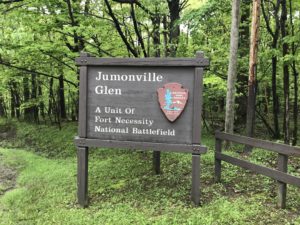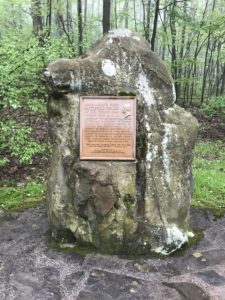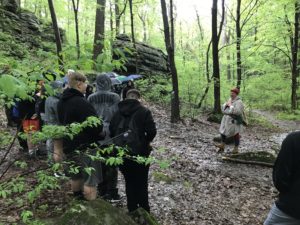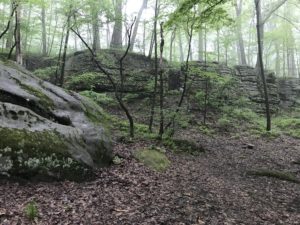 Today is the second lesson in the history of Fort Necessity National Battlefield: Jumonville Glen.
Today is the second lesson in the history of Fort Necessity National Battlefield: Jumonville Glen.
In January 1754, before George Washington returned from his mission, Virginia Governor Dinwiddie sent out a small force of Virginia soldiers to build a fort at the forks of the Ohio, modern-day Pittsburgh. The stockade was barely finished when a French force attacked and drove off the Virginians. The French built a larger fort on the site and called it Fort Duquesne.
 Without knowing of the defeat, Governor Dinwiddie had sent out a company of Virginia soldiers to help in the defense of the fort. George Washington was second in command of this company when they left Virginia on April 2, 1754. The company needed to build a crude road in order to get supplies and cannon to the fort. George was sent ahead with part of the men to build the road, while Colonel Joshua Fry came behind with the wagons and cannon. Along the way, George learned of the defeat of the fort.
Without knowing of the defeat, Governor Dinwiddie had sent out a company of Virginia soldiers to help in the defense of the fort. George Washington was second in command of this company when they left Virginia on April 2, 1754. The company needed to build a crude road in order to get supplies and cannon to the fort. George was sent ahead with part of the men to build the road, while Colonel Joshua Fry came behind with the wagons and cannon. Along the way, George learned of the defeat of the fort.
Washington and his men arrived at the Great Meadows, as the Fort Necessity area was called, on May 24, 1754. The meadows, filled with grass and without trees, were a good place for the men to rest and await the rest of the regiment. While awaiting Colonel Fry, Tanacharison sent word that a small band of Frenchmen were camped close to the meadows.

At dawn on May 28, 1754, Washington, with 40 men, and some of Tanacharison’s men, surrounded the French encampment. No one is sure who shot first, but when the skirmish was finished, ten Frenchmen were killed and 21 wounded. The commander of the French force, Joseph Coulon de Villiers, Sieur de Jumonville, was among the dead. Only one Virginian was dead. The skirmish lasted 15 minutes. One Frenchman escaped and made it back to Fort Duquesne to tell of the attack.
George Washington wrote to his brother about the attack, “I fortunately escaped without any wound. The right wing, where I stood, received all the enemy’s fire. It was the part where the man was killed. I heard the bullets whistle, and, believe me, there is something charming in the sound.”

Today Jumonville Glen marks the site of the skirmish. It is a beautiful spot between a stream and some rock cliffs. Jumonville Glen is one of the four sites that make up Fort Necessity National Battlefield. Waysides and a monument preserve the spots where Washington felt his first musket balls fly in battle.
